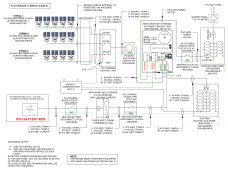agarg
New Member
Folks:
My wife and I got tired of PG&E enforced outages in Sonoma county (California) and I initially started to search for California approved 3 x 1 KW boxes for each of our refrigerators and the internet router + phone. It looked like a $4K spend when suddenly a company liquidation event gave me an opportunity to purchase SMA ABU 200 Amps + SMA Storage inverter 6KW + BYD 10.2 KW. It was more expensive and more involving, but it offered a pathway to complete energy independence. And, as engineers, we love to make things complicated!!
Using these units, I have come up with an energy independence plan that looks like the line diagram of the proposal (attached).
I will also post real pictures of the stuff soon.
My wife and I got tired of PG&E enforced outages in Sonoma county (California) and I initially started to search for California approved 3 x 1 KW boxes for each of our refrigerators and the internet router + phone. It looked like a $4K spend when suddenly a company liquidation event gave me an opportunity to purchase SMA ABU 200 Amps + SMA Storage inverter 6KW + BYD 10.2 KW. It was more expensive and more involving, but it offered a pathway to complete energy independence. And, as engineers, we love to make things complicated!!
Using these units, I have come up with an energy independence plan that looks like the line diagram of the proposal (attached).
I will also post real pictures of the stuff soon.



